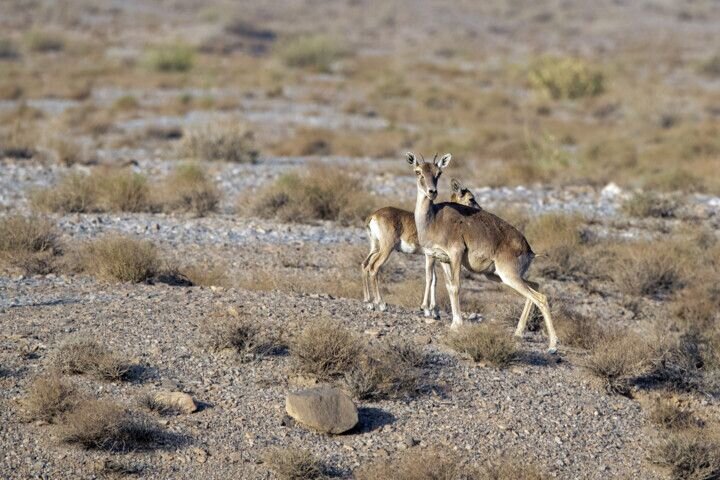DOE to benefit from NGOs to preserve wildlife: official

TEHRAN – The Department of Environment is planning to use the potential of non-governmental organizations to protect wildlife and manage four ecological zones in the country, an official with the DOE has said.
Highlighting the importance of environmental NGOs in various sectors, Hassan Akbari said, “We plan to utilize the specialized capabilities of NGOs in all areas related to wildlife conservation and management of the ecological zones namely national parks, protected areas, national natural monuments, and wildlife refuges,” IRNA reported.
Protected areas
Five new protected areas, measuring 230,000 hectares, have been created across the country, expanding the protected areas to 19.5 million hectares, the Department of Environment announced on May 7.
The protected areas under the supervision of the Department of Environment now account for 11.8 percent of the country’s lands, IRNA reported.
The history of Iran's first protected areas dates back to 1967 when the proposal for the establishment of two national parks and 15 protected areas as the first protected sites in Iran was approved.
In 1976, there were more than 65 protected areas covering an area of 6.7 million hectares in the country, which has now extended to more than 300 areas with an area of 19.5 million hectares.
The first new protected area with an area of about 63,000 hectares is located in Gavkhoni Wetland with the aim of preventing any change in land use and protecting the vegetation as well as safeguarding the wetland and birds that are present at special times when the wetland is filled with water.
The second site with an area of about 11,000 hectares is Kalate and Tang-e Sorkh located in Fars province. The goal is to preserve the diverse vegetation and pristine wildlife there. It is one of the prohibited hunting zones.
Padena, measuring 30,000 hectares area in the city of Semirom in Isfahan province, is the third added area.
It can enhance the protection of the Dena National Park conservation, which is one of the most important protected areas in Zagros since wildlife moves between these two regions.
With good vegetation and abundant water sources, wildlife can be easily revived. This area was one of the free zones before.
The next area is located in the Kalate desert, covering about 126,000 hectares in the east of Isfahan around Khur and Biabanak. It is home to valuable species such as rams, ewes, gazellas, and Bustards.
The last area, about 200 hectares, is a national natural monument called ‘Sheikh Mohammadlu’ in Ardabil province. It contains a collection of fossil trees dating back to prehistoric geological periods.
Wildlife preservation
Iran is considered a crossroad between Asia, Africa, and Europe. This geographical situation has led to the climatic diversity of the country.
Despite the country’s rich biodiversity, some species have been severely damaged over the past years.
A total of 1036 vertebrate species are identified in the country. Out of 209 mammals, 560 birds, 242 reptiles, and 25 amphibians, around 75 species were included in the International Union for Conservation of Nature (IUCN) Red List in 2022.
Due to human activities, biodiversity has faced numerous threats, including habitat loss and fragmentation, overexploitation of natural resources, pollution, invasive species, and climate change, which has led to the extinction of many species and the degradation of ecosystems worldwide.
Several measures can be taken to mitigate the impacts of climate change, particularly drought, on the destruction of plants, such as managing the exploitation of natural resources and preventing the destruction of ecosystems to prevent severe conditions and lessen pressures on plants.
Also, raising public awareness to protect nature is an important step that helps governments to preserve nature.
By improving local communities, private sectors, and individuals’ roles in preserving wildlife along with the help of today's science and technology, we can make sure that ecosystems can thrive and plant and animal species can exist for future generations.
MT/MG
Leave a Comment